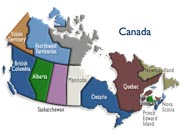Chilly Canada's colourful northern lights
 Yellowknife, Canada - Miyu, a petite lady from Tokyo, could not get over her astonishment. Darkness had fallen many hours earlier in Canada's Northwest Territories, and the temperature stood at minus 40 degrees centigrade. But something gradually appeared in the night sky that more than compensated Miyu for braving the cold: the northern lights.
Yellowknife, Canada - Miyu, a petite lady from Tokyo, could not get over her astonishment. Darkness had fallen many hours earlier in Canada's Northwest Territories, and the temperature stood at minus 40 degrees centigrade. But something gradually appeared in the night sky that more than compensated Miyu for braving the cold: the northern lights.
Intermittently visible between August and April, the natural light show, formally known as aurora borealis, consists of green veils that are joined - when conditions are right - by magenta stripes. If the air is charged, the prerequisites are perfect. Then the lights dance.
"You never know when they'll show up and how bright they'll be," remarked a man nicknamed Buffalo Mike. He was one of the locals among the sky gazers who had gathered in Aurora Village, a tent city outside Yellowknife, the capital of the Northwest Territories.
Viewing conditions for the celestial fireworks are especially favourable in the Northwest Territories, which are bisected by the Arctic Circle. Temperatures can be quite uncomfortable, though, and a stiff wind often makes it feel even 10 degrees colder - enough to freeze your nose to your camera or frostbite exposed skin after just a few minutes.
Canadians, of course, are well-equipped for their winters. They generally venture outside in warm underwear and trousers, heavy felt boots with rubber soles, and down coats with fur-lined hoods. And it is a dry cold, so "you immediately warm up when you enter a heated building," noted Carlos Gonzales. He loves putting tourists on a snowmobile and driving them over Great Slave Lake, whose northern shore skirts Yellowknife. North America's deepest lake at 614 metres, it is largely frozen over in winter.
"The ice can get up to two metres thick," Gonzales said.
Speedy 125-horsepower snowmobiles are not the only vehicles that take advantage of the lake's ice-and-snow covering in winter. Traffic is also busy on roads across the frozen expanse, which are as broad as regular highways and carry convoys of trucks headed mainly to diamond mines in the region.
"They bring the mines supplies for the whole year," Gonzales explained. The trips take nearly forever because the trucks must obey a speed limit of 10 kilometres per hour. This prevents them from making a lot of waves under the ice, which could cause the surface to crack.
It is not uncommon for travellers in the Northwest Territories to see no other human beings for hours. But dangers lurk - at least for tourists - in the pine forests along the roads: moose, caribou, lynx, arctic fox, wolves, bears and bison. The animals are part of the natives' daily life, and of their diet, too, which includes mooseburgers, bison soup and dried arctic fish.
Buffalo Mike was wearing a leather cap, along with gloves as big as shopping bags that were a showstopper during the viewing of the northern lights. His fellow sky gazers were even more intrigued by the gloves' origin: A seamstress had made them from a wolf he had shot himself, he said.
"They've lasted for many years, and my hands have never got cold in them," Buffalo Mike remarked.
Internet: www. canada. travel, www. spectacularnwt. com, www. northernfrontier. com. (dpa)